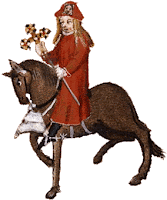This is my second course in which I have had to read The Canterbury Tales and both times I have gravitated greatly towards the Wife of Bath’s Tale. I feel as though it is the perfect example of the plight of women in a patriarchal society. In the tale, the Wife of Bath recounts the story of a highly esteemed knight who rapes a young maiden. The knight was due to be killed for his crime, however the Queen found it more fitting to teach him a lesson. She ordered the knight to find the correct answer to the question, ‘”What do women desire most?”. To find the answer, the knight set of on a quest. Along his journey, he met an elderly haggard-looking woman who claimed to know the correct answer, but she would only give it to him if he agreed to fulfill her wish afterwards. Together they traveled back to the Queen and revealed the answer- women desire sovereignty over their partners. With the elderly woman’s answer being correct, she finally spoke of her secret wish- to marry the knight. The knight begrudgingly agrees to marry her, but this is when we see a twist. The old woman transforms into a younger and more beautiful version of herself as a reward for the new outlook her husband has on women. A reward (yes, you read that correctly) for a rapist, nonetheless a reward of a young and attractive wife which is eerily similar to the description used for his victim. While the conclusion is simply abhorrent, it certainly mimics the rhetoric of the time. The Middle Ages were not shy in their complete and utter disregard of rape. That is why in my paper I will be focusing on the idea of rape and justice in medieval times.
To delve into the topic of sexual violence, I must first address the society which upheld such a terrible crime for so long. Patriarchal societies have been a thing since the beginning of time and that surely does not exclude the Middle Ages. As we may all have learned in history classes, men were viewed as the breadwinners while women were the homemakers. This meant that women often took the backseat in society, leaving it to the men to assume leadership roles. In fact, as per Tison Pugh's article, the idea of “masculine speech” and “feminine silence” were highly revered in this time period. This was essentially a universally understood rule of society which was even echoed in religious writings. In Lucia Akard’s article, “A Medieval #MeToo”, we see how far the idea of feminine silence was taken in the Middle Ages. This article, scarily enough, is able to bridge the gap between medieval and modern rape culture which helps the reader get a sense of the systematic oppression of women that has been happening over centuries. Medieval women did speak out on the sexual violence they experienced, yet their attackers often silenced them in more ways than one. Firstly, unjust laws were created to ensure that women rarely found justice. For example, in Medieval France a law was recorded that women who did not fight hard enough to resist a rape were basically out of luck in persecuting their attacker. Another way was the use of social class as shown in Karras’ article. Aristocratic men of the Middle Ages used their wealth and social standing as a way to manipulate women and their pursuit of justice. Since these men were so rich, they knew if they were to commit a crime of sexual violence against poor women, it would most likely not be reported because of the wealth disparity.
In fact, in Classen’s article we actually get to see how scarcely reported rapes were in Medieval France, Over the course of 85 years, there was only 12 reported cases of sexual violence. As we know, this number is simply outrageous. It is very low despite the fact that rapes were very common. This is a clear sign of women being silenced and beaten into submission. Another example of men using their power against women is introduced in Godspeed’s article. She zeros in on the fact that the assailant in the tale was a knight. A knight’s duty is to protect its people, yet this knight did the complete opposite. He used his position of power to strip a woman of her rights. Rape and justice (or lack thereof) is a prevalent theme in medieval literature and one that demands more conversation in order to shed light on the issue.



